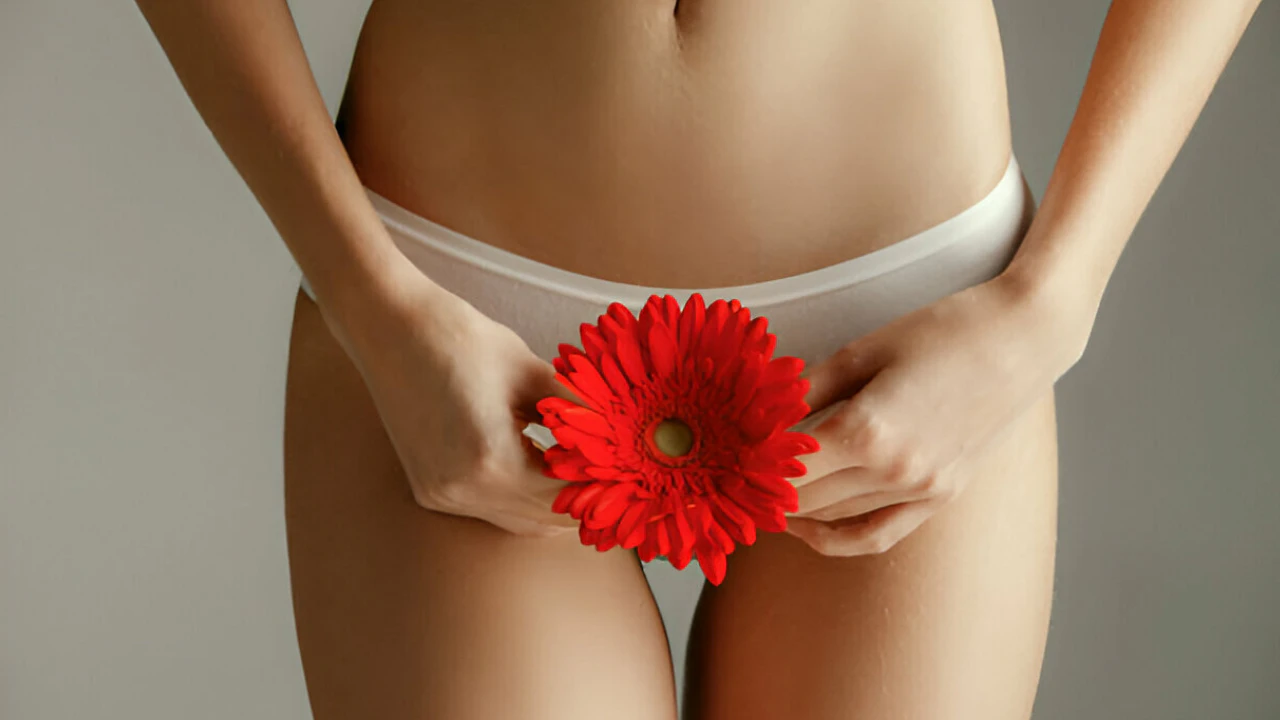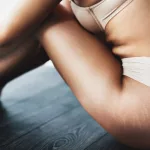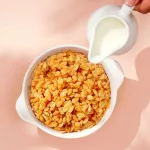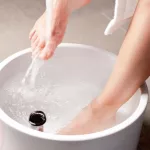Have you ever heard someone point out “innie” or “outie” vaginas and wondered what they have been speakme about? Maybe you’ve stuck yourself curious about your personal body however felt too shy to ask. Well, you’re in the right vicinity! Today, we’re diving into the world of labia appearance—what those terms suggest, why they depend, and why there’s no need to stress approximately how you look down there. Spoiler alert: it’s all regular, and it’s all beautiful.
I’ll never overlook my buddy Josephine spilling her concerns to me over espresso sooner or later. She was convinced some thing changed into “wrong” with her because her labia didn’t fit the smooth, tucked-in appearance she’d visible in films or magazines. She’d spent years quietly stressing approximately it, wondering she became the abnormal one out. But after a candid chat and a little studies, she observed that labias are available in every form and size imaginable—and that’s the real norm. Her relief turned into palpable, and it were given me wondering: how many of us are obtainable questioning the equal factor?
So, permit’s damage all of it down. In this newsletter, we’ll discover the distinction between innie and outie labias, look at some captivating stats, bust some myths, and talk approximately why embracing your specific frame is the manner to move. Whether you’re right here out of interest or searching out reassurance, I’ve were given you blanketed with a pleasant, no-judgment guide to know-how innie vs outie vaginas.
Understanding Labia Appearance: Innie vs Outie Explained
First matters first—permit’s get clean on what we’re speakme approximately. When people say “vagina,” they frequently imply the vulva, that is the outer a part of your genital vicinity. The vagina is actually the inner canal, however for this convo, we’re focusing at the vulva—specially, the labia. These are the folds of skin that surround and protect the vaginal beginning, and they arrive in two sets: the labia majora (outer lips) and the labia minora (internal lips).
The labia majora are the larger, fleshier outer folds—typically included with pubic hair—and they act like a shield for what’s inside. The labia minora take a seat just underneath them, in the direction of the vaginal commencing, and they’re generally thinner and more delicate. Here’s in which “innie” and “outie” are available: those terms describe how the labia minora appearance compared to the labia majora.
What’s an Innie Labia?
If you’ve got an innie, it method your labia minora are nestled snugly in the labia majora. When you’re standing or simply chilling, you may not see the internal lips in any respect—they’re tucked away, giving the vulva a greater enclosed or “tidy” appearance. It’s a not unusual setup, and lots of oldsters with innies don’t even suppose two times about it. But right here’s the aspect: it’s not “better” or “worse”—it’s simply one manner labias may be.
What’s an Outie Labia?
On the flip facet, an outie labia manner the labia minora peek out past the labia majora. They might stick out a little—or lots—and can be seen even when you’re now not aroused. The duration, thickness, or even shade of the labia minora can vary wildly from individual to individual. Some might cling decrease, others is probably asymmetrical, and that’s all part of the natural package.
Here’s the key takeaway: whether you’ve were given an innie or an outie, it’s completely normal. Think of it like noses—some are small and button-like, others are longer or broader, but they all do their task simply exceptional. Labias are the same. They’re fashioned by genetics, hormones, and lifestyles changes, and no two are same. So, when it comes to innie vs outie vaginas, it’s much less approximately “that is proper” and extra approximately “that is me, and that’s cool.”
Normal Variations and Statistics: You’re Not Alone
Okay, so labias are available in all sorts of seems—but just how common are innies and outies? Turns out, it’s pretty split down the center. A 2017 examine took a look at this and located that about 56% of women have outie labias—where the labia minora extend beyond the majora—while 44% have innies, with the internal lips hidden. That’s almost half of and half of! So, regardless of which camp you’re in, you’ve got masses of enterprise.
But why the variety? Well, a group of factors play into how your labias turn out:
- Genetics: Yep, you may thank your own family tree for a number of this. The length, form, and even texture of your labias are partly inherited, just like your peak or eye shade.
- Hormones: Big existence moments like puberty, being pregnant, or menopause can tweak matters down there. During puberty, as an instance, rising estrogen levels might make the labia minora grow or darken. Pregnancy can stretch matters out briefly, and growing older would possibly soften or thin the tissues over time.
- Aging: As we become old, skin anywhere—consisting of the vulva—loses a few elasticity. That can shift an innie to an outie or change how distinguished the whole thing looks.
What’s wild is that your labias aren’t static—they are able to evolve over your lifetime. Maybe you had an innie as a teenager, but after youngsters or as you hit your 40s, things appearance a little different. That’s no longer a flaw; it’s just your body doing its thing. Sites like the Labia Library exhibit this variety with actual photographs, proving there’s no person-size-suits-all on the subject of vulvas.
The backside line? Whether you’re crew innie or team outie, you’re part of a big, diverse club. There’s no “trendy” to chase—simply the particular setup you had been born with, formed through lifestyles alongside the manner.
Health Considerations: Does Appearance Matter?
Now, let’s address a large query: does having an innie or outie labia have an effect on your health or sex life? Nope, under no circumstances! Whether your labia minora are tucked in or putting out, they’re doing their activity—shielding your vaginal establishing and including to sensation in the course of intimacy. There’s no proof that look adjustments how matters paintings down there.
But myths about this stuff are anywhere, so allow’s resolve some:
Myth 1: Only One Look is “Normal”
You’ve in all likelihood visible airbrushed photos or person films where every vulva appears the equal—small, symmetrical, innie-fashion. That’s fiction, now not reality. In real lifestyles, labias are all around the map—lengthy, quick, dark, mild, innie, outie—and that’s what’s everyday. Studies like the one we mentioned show how common both types are, so toss that “one perfect look” concept out the window.
Myth 2: Appearance Impacts Sex
Another sneaky lie is that outie labias—or any variation—mean less pleasure or overall performance. Nope! Sexual leisure comes from nerves, connection, and comfort—now not the duration of your labia minora. Both innie and outie labias have the same nerve endings and sensitivity. So, with regards to innie vs outie vaginas, neither has the threshold inside the bedroom.
When to Check In With a Doc
That said, there are instances when labia stuff might need a better look—now not because of how they appearance, but how they feel. Most oldsters with outies or innies by no means have problems, however if you note:
- Persistent pain or itching that won’t cease.
- Discomfort at some stage in exercise, sex, or tight clothes—like chafing from lengthy labia minora.
- Weird modifications, like sudden swelling or sores.
It’s worth chatting with a physician. Conditions like labial hypertrophy (whilst the labia minora are extra big) can sometimes purpose inflammation, however it’s rare and typically attainable with easy fixes. Most of the time, even though, variations in appearance are just that—differences, not troubles.
Embracing Your Unique Look: Confidence is Key
Alright, we’ve were given the information down—now let’s communicate approximately loving what you’ve were given. In a global captivated with perfection, it’s smooth to second-bet your frame. But here’s the fact: your labias, whether innie or outie, are ideal because they’re yours. Embracing that can feel releasing, and I’ve were given some hints to help you get there.
1. Shift the Focus to Health
Instead of zooming in on how your labias look, think about how your frame feels. Eat nicely, pass around, get correct sleep—whilst you’re thriving average, it’s less difficult to realize your vulva as part of the package deal, not the whole tale.
2. Be Your Own Hype Squad
Cut yourself some slack! If you catch your self stressing approximately your labias, flip the script. Try announcing, “Hey, that is me, and I’m enough.” It sounds tacky, however over time, it sinks in. Your body isn’t right here to win a beauty contest—it’s right here to carry you via existence.
three. Learn and Unlearn
Knowledge can quiet those doubts. Read up on vulva variety—Glamour UK has a incredible piece in this—or check out actual tales from others. The greater you spot how numerous labias are, the much less you’ll experience on my own.
4. Lean on Support
If lack of confidence’s hitting difficult, speak it out. A therapist who receives body photograph stuff can work wonders, or strive a group like the National Association for Self-Esteem. Connecting with people who’ve been there can remind you which you’re now not the handiest one wrestling with this—and also you don’t ought to.
At the cease of the day, your labias don’t define you. They’re just one piece of the notable puzzle that’s you—whether or not they’re innie, outie, or some thing absolutely specific.
Wrapping It Up: You Do You
So, in which does that go away us? Innie vs outie vaginas isn’t a opposition—it’s a celebration of variety. With 56% of ladies rocking outies and 44% sporting innies, both are completely trendy. Your labias don’t mess with your health or happiness, and any worries about “everyday” are simply noise you could song out.
Think again to Josephine—she went from irritating to empowered as soon as she realized her body became nice simply because it become. You can too. Next time you hear “innie” or “outie,” smile knowing there’s no incorrect answer—simply your tale, and it’s worth proudly owning. Here’s to loving the skin you’re in!


















Leave a Reply
You must be logged in to post a comment.